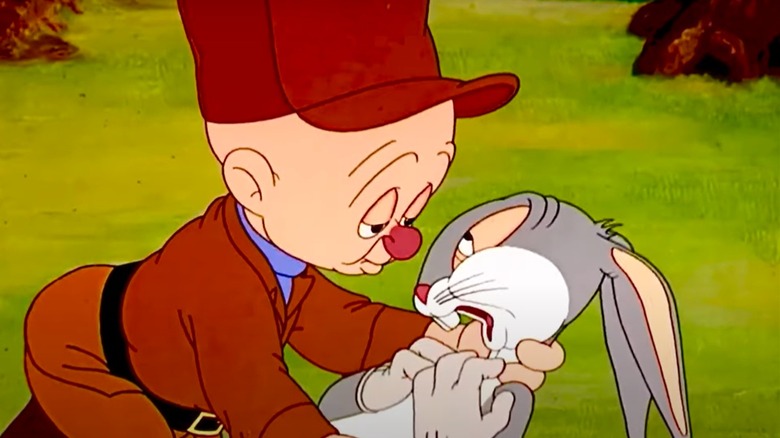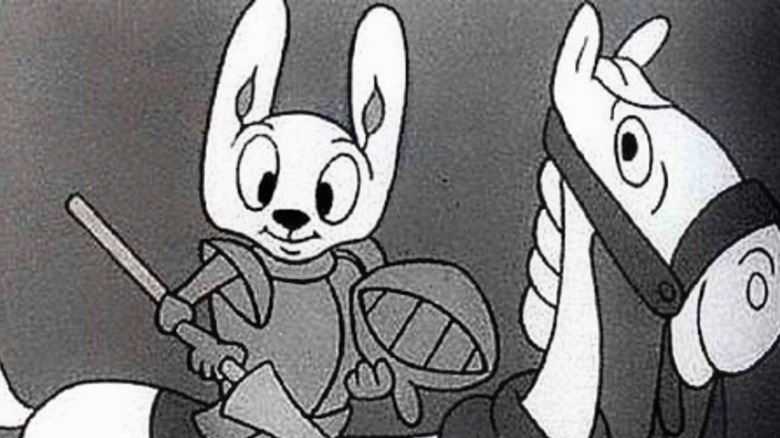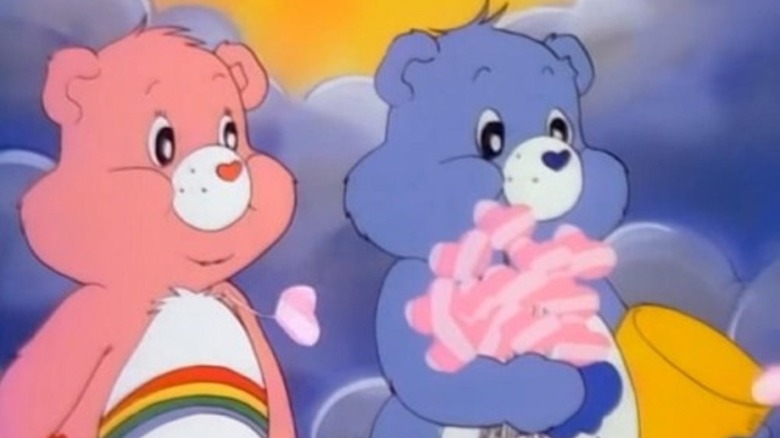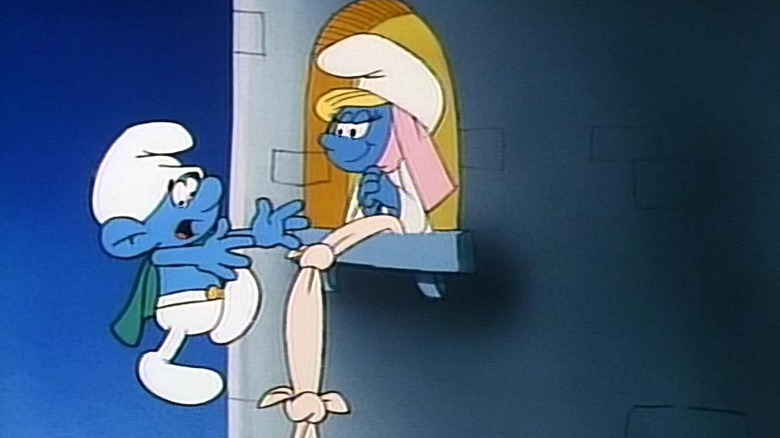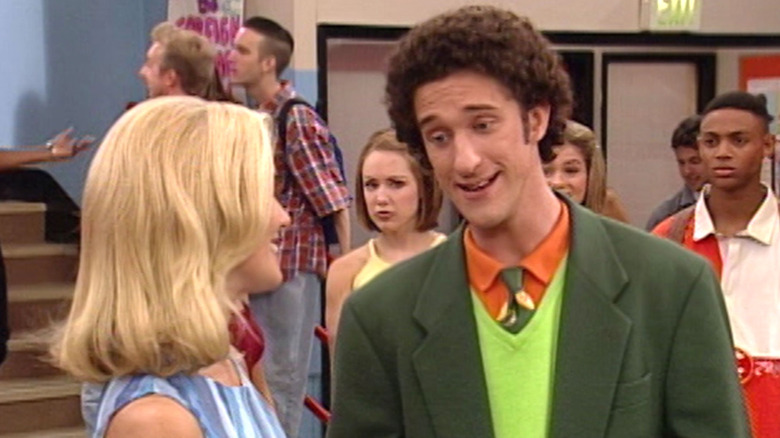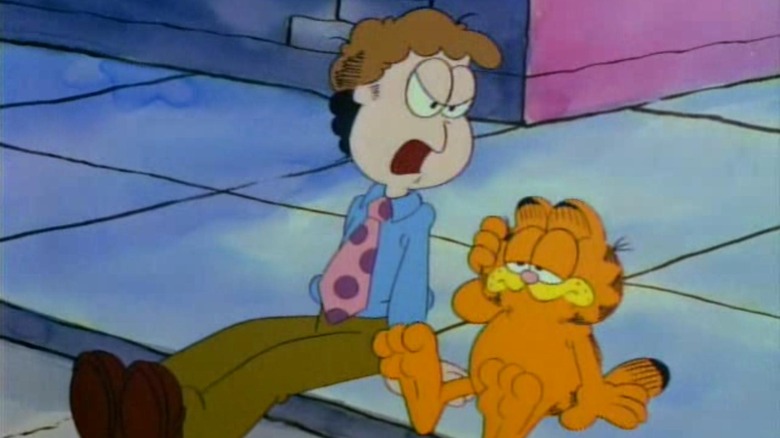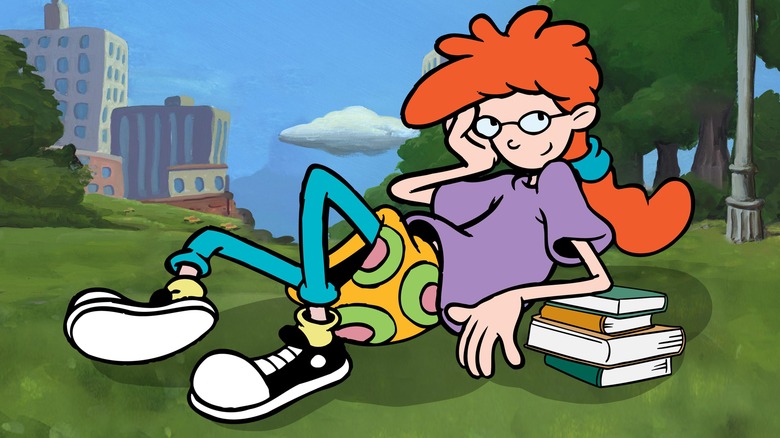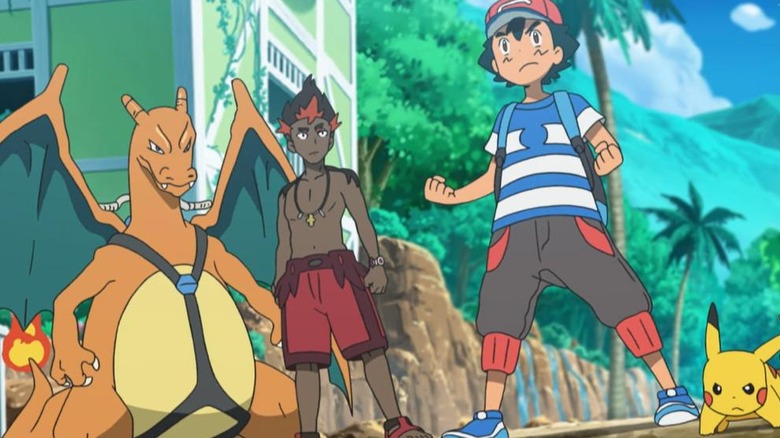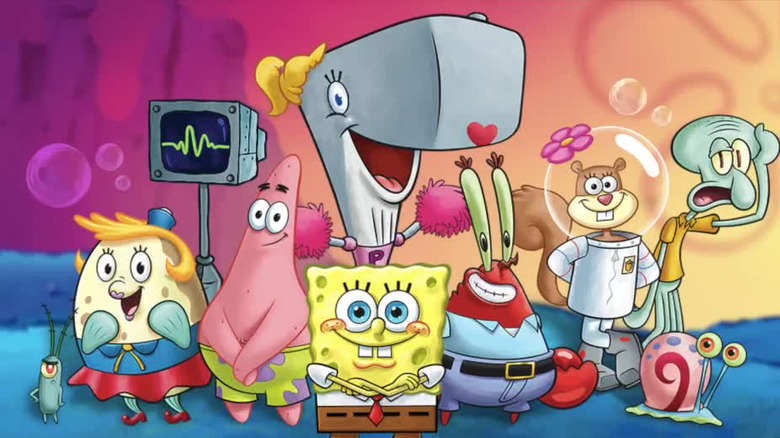The Day Saturday Morning Cartoons Died
Saturday morning cartoons — like payphones, video rental stores, and TV guides — are one of those cultural touchstones that meant so much to older generations, but are as meaningless as a wireless telegraph to younger ones — gone within a lifetime. The ritual of a kid getting up early on a Saturday and watching animated series that were rarely more than toy commercials for hours, until sports or something started at lunchtime, was sacrosanct for many American children from the 1960s until the 1990s or so.
But unlike the slow and gradual phasing out of payphones or Blockbusters, there's an actual date to which you can pinpoint the death of the Saturday morning cartoon as a ubiquitous American phenomenon: September 12, 1992. While that day wasn't the last day a cartoon aired on a Saturday morning, it did sound the death knell for a once-sacred practice. Here is the complete story of how Saturday morning cartoons died, and who killed them.
The beginning of Saturday morning cartoons
The first cartoon to air on a Saturday morning was "Crusader Rabbit," four-minute-long shorts that spoofed movie serials co-created by Jay Ward, who would become more famous for his later creation "The Adventures of Rocky and Bullwinkle." This short series, which debuted in 1950, was the first real attempt to create animation for television. Prior to that, animated shorts — such as Bugs Bunny or Donald Duck cartoons — were the exclusive fodder of movie theaters. But while "Crusader Rabbit" was the first, the series didn't kick off the phenomenon.
The real catalyst came when William Hanna and Joseph Barbera were fired from MGM's animation department in 1957. They subsequently founded their own animation studio, where they innovated several limited animation techniques that saved the studio time and money, and allowed them to produce numerous weekly half-hour cartoon shows, like "The Flintstones," "The Jetsons," and others. These techniques included reducing the amount of motion occurring on-screen and recycling backgrounds.
As these shows became more abundant, they were increasingly seen as TV for children, and so they got moved into the time slot when children were most likely to be watching TV: Saturday mornings from 10 a.m. until noon. By 1966, all three of the major networks — ABC, CBS, and NBC — were dedicating a block of time on Saturday mornings to animated children's programming. The idea of animated shows like "The Flintstones" as prime-time viewing for the whole family faded, and cartoons became thought of as Saturday stuff for kids.
The beginning of the end
The reasons for the end of the traditional Saturday morning cartoon block are numerous, and they have their roots in parental advocacy groups, who were protesting the amount of time kids spent watching TV by the late '60s. These groups were concerned about cartoon depictions of violence and stereotypes, as well as the commercialism that has always been a part of TV cartoons. Kids, it turns out, had a difficult time distinguishing the shows they were watching from the ads that ran during them. Despite attempts to balance advertising with educational and social content like "Schoolhouse Rock!" and "One to Grow On," the new wave of cartoons that hit the air following the success of "The Smurfs" — including shows such as "G.I. Joe," "He-Man," and "Care Bears" — were extremely commercial and all tied to popular toy lines.
In 1990, the FCC passed the Children's Television Act, which prescribed a minimum number of hours of educational content for children per week for broadcast networks. They strengthened these mandates in 1996 with the Children's Programming Report, which added even more guidelines for what could be aired in those once-precious Saturday morning hours. Additional factors such as cable television, the increased popularity of the internet, VCRs, and after-school animated programming blocks all contributed to the downfall of the Saturday morning cartoon, but the earliest blow was the government telling networks they needed fewer shows with talking animals, and more with people talking about animals.
NBC: the first to fall
The fateful day of September 12, 1992, is considered the day Saturday morning cartoons died. This was the date on which one of the major networks — in this case, NBC — first stopped airing animated programs during the traditional cartoon programming block. As it turns out, NBC had already considered dumping its cartoon block in the early 1980s. They felt that kids' rapidly fluctuating attentions and interests made it difficult to land a solid, predictable hit in the Saturday morning time slot, so they thought they might do better to air live-action programming for adults that might result in more predictable, steadier ratings. Then "The Smurfs" hit in 1981, and became a monster hit for the network, giving the cartoon block a reprieve for another decade.
But once "The Smurfs" ended and a new cohort of kids were watching Nickelodeon instead of NBC, the network finally pulled the trigger on replacing their children's programming block with live-action programming for adults, with the one remaining concession to younger viewers being a block of shows aimed at younger teens, inspired by the hit teen sitcom "Saved by the Bell."
This plan did not make most anti-cartoon advocacy groups happy, either. The president of Action for Children's Television told the Los Angeles Times, "NBC is not taking away cartoons, which are mostly dumb anyway, and replacing them with meaningful, terrific programs for kids, but instead putting in their place yet another soft information show for adults."
The fateful day
If you had tuned in to NBC on a Saturday morning in the summer of 1992, you would have seen animated programs such as "Space Cats," "Yo Yogi!," and "Captain N and the New Super Mario World." These were maybe a step down from the heights of "The Smurfs," "Alvin and the Chipmunks," and "The Adventures of the Gummi Bears" in the '80s, but at least they were still cartoons. By the fall, however, this lineup was completely retooled to focus on live-action informational programming for adults, and at least theoretically for children. The anchor for this was a two-hour Saturday edition of "The Today Show," filled with what the network called "user-friendly" pieces on topics kids aren't exactly known to love, like cooking, gardening, and travel.
On September 12, the completely revamped Saturday morning lineup featuring "Saved by the Bell" inspired programming — renamed TNBC, or "Teen NBC" — launched, ending Saturday morning cartoons on NBC for good. The first lineup of TNBC shows included "Saved by the Bell," a SBTB copycat called "California Dreams," and a game show called "Double Up." There was also a show called "Name Your Adventure," where kids wrote in with their wildest dreams, like meeting the president, and then Mario Lopez and Tatyana Ali made it happen. Later additions would include another "Saved by the Bell" ripoff called "Running the Halls" and an actual SBTB spin-off, "Saved by the Bell: The New Class."
Teen TV yields to infotainment
From 1992, the Teen NBC (TNBC) lineup lasted for a decade, adding and subtracting new short-lived teen dramas like "Just Deal" and "Sk8" in the early years of the 21st century. By 2002, however, ratings had dropped significantly, and NBC learned that their programming for younger viewers was not reaching its intended audience: it turns out that the median age of viewers for TNBC was almost 42 years old.
To try to fix this — and because there were still federal standards for minimum hours allotted for children's educational programming — NBC outsourced their Saturday morning lineup to Discovery Kids. The new "Discovery Kids on NBC" programming block was a 3-hour chunk of shows with titles like "Prehistoric Planet," "Croc Files," and "Scouts Safari."
This lineup would only last a few years itself, ending in 2006, but the format of blocks of "infotainment" TV that technically meets the FCC's standards has remained the formula for NBC's Saturday mornings ever since. The branding has changed to "Qubo on NBC" to "NBC Kids" to "The More You Know," which began in 2016, and is still ongoing as of late 2023, featuring shows like "Earth Odyssey" and "Mutual of Omaha's Wild Kingdom: Protecting the Wild." This all sounds less exciting than a band of globe-trotting singing chipmunks, but at least these shows won't make kids want to buy merch.
CBS follows the lead
While NBC was an innovator in the field of abandoning animated children's programming on Saturday mornings, eventually, all the other networks would follow suit. The next network to drop cartoons was CBS, who, largely prompted by the increased FCC strictures of 1996, revamped their Saturday morning lineup as Think CBS Kids in 1997. Prior to that, CBS had been home to hit animated series like "Teenage Mutant Ninja Turtles," "Garfield and Friends," and "The Muppet Babies." Now, however, kids getting up to watch TV with a bowl of their favorite cereal would be treated to "The Sports Illustrated for Kids Show," "The New Ghostwriter Mysteries," and a kids' version of "Wheel of Fortune" called "Wheel 2000."
The Think CBS Kids lineup would prove to be a ratings disaster, however, and the branding would be abandoned by 1998. Retitled as CBS Kidshow, the network's Saturday morning programming would actually return to animated programming for several years, through partnerships with the Canadian animation studio Nelvana, Nickelodeon (called Nick Jr.), and DIC Entertainment (titled Saturday Morning Secret Slumber Party).
Animation was dropped again in 2013, in favor of a block of educational programming originally called CBS Dream Team, which was renamed CBS WKND in 2023. This lineup features such shows as "Lucky Dog" (about shelter dogs), "Recipe Rehab" (a cooking competition), "Hope in the Wild" (a show about animals), and "Tails of Valor" (another show about animals).
ABC is the next to go
Of the three original major networks, ABC held out the longest in terms of Saturday morning cartoons, thanks in no small part to its affiliation with Disney. In 1997, ABC launched a revamped children's programming lineup called "One Saturday Morning," which aired several different Disney-produced animated shows, including "Recess" and "Pepper Ann."
In 2001, the block was expanded and renamed ABC Kids. This new lineup included cartoons such as "Lilo and Stitch: The Series," but also included live-action material such as "NBA Inside Stuff" and "Power Rangers," in addition to reruns of live-action Disney shows like "Even Stevens" and "Lizzie McGuire." By the end of ABC Kids' reign as the Saturday morning programming block on ABC, the time slot was mostly filled with reruns of live-action Disney sitcoms like "Hannah Montana" and "The Suite Life of Zack and Cody."
This was scrapped in 2011 in favor of a new weekend educational package put together by Hearst Media, the same company that makes CBS WKND and NBC's The More You Know. This new lineup, called Weekend Adventure, like the other Hearst syndication packages, is designed to meet FCC educational standards, and, as a result, features — you guessed it — a lot of animal shows. You can settle in on a Saturday morning and watch, for example, "Wildlife Nation with Jeff Corwin."
The sad fate of Fox Kids
Fox Kids, the Saturday morning programming block for the Fox Network, launched in 1990 (as Fox Children's Network) as a result of a dispute between Disney and Fox over the rights to air the Disney Afternoon programming block. Fox Kids aired not only its own original programming, such as "Bobby's World," but also shows produced by other studios, including "Batman: The Animated Series," "X-Men: The Animated Series," and "The Tick." While the Fox Kids schedule originally took up three hours on Saturdays and a half-hour each weekday, as the programming block became increasingly popular, it ballooned to four hours on Saturdays and three hours on weekdays. By the mid-'90s, Fox Kids programming was the most popular on the network.
Despite being the highest-rated block of children's programming for much of the '90s, Fox Kids lost ground to ABC's Disney-based programming in 1997, and then even more when "Pokemon" moved to Kids' WB in 1999. By 2001, Fox Kids was no longer the powerhouse it once was, and the time slot was bought by 4Kids Entertainment, which aired its own animated programming on Saturday mornings. when
Fox got out of the children's programming business altogether in 2008, and filled the time slot with infomercials and the syndicated educational programming block "Xploration Station," a collection of shows highlighting the STEM fields, helping affiliates meet FCC standards. Though it launched as a 2-hour block in 2014, in 2016 it increased to 3 hours of shows like "Xploration Awesome Planet," "Xploration DIY Sci," and, of course, an animal show, "Second Chance Pets."
The CW: Last block standing
The last network standing when it comes to cartoons was the CW, which had begun airing children's programming on Saturday mornings in 1995 as Kids' WB, before merging to form CW in the following decade.
Kids' WB aired some extremely popular series, including some brought over from Fox Kids, including "Animaniacs," "Batman: The Animated Series," and "Pokemon." The block got even more popular when it introduced various anime series in 1999. The block survived a merger with CW in 2006, even though it dropped its weekday morning and afternoon time slots. In 2008, Kids' WB was replaced by The CW4Kids, which the name probably gives away as programming made up of shows produced by 4Kids, including "The Batman," the 2003 version of "Teenage Mutant Ninja Turtles," and "Yu-Gi-Oh." The block was renamed Toonzai in 2010 and then fully replaced by the Saban-run programming block Vortexx.
Vortexx was the last gasp of the Saturday morning cartoon. From 2012 to 2014, it aired such titles as "Justice League Unlimited," "Dragon Ball Z," "Digimon," and "Transformers: Prime." But on September 27, 2014, the process begun by NBC 12 was completed: Vortexx was replaced by "One Magnificent Morning," a block of live-action educational content produced by — you guessed it — Hearst Media. One Magnificent Morning offers you yet more animal-based content, such as "Jack Hanna's Into the Wild," "Pet Vet Dream Team," and "Tails of Valor," which also airs on CBS on Saturday, so it looks like you've got two chances to catch it.
Cartoons today
Despite the fact that the closure of Vortexx in 2014 marked the end of traditional animated programming blocks on Saturday mornings, it's pretty doubtful modern kids even noticed. To be honest, it's likely most modern kids are confused by the very idea of having to turn the TV on at a specific time in order to see a specific show. Besides the fact that there is no shortage of cable channels like Cartoon Network and Nickelodeon that air cartoons all over the place, streaming services like Netflix and Hulu mean that kids can watch more or less any cartoon they want, at just about any time they want, as many times as they want — or at least until the network's parent company decides the show is some kind of financial burden and wipes it from the internet.
As for the children of the '70s, '80s, and '90s who grew up with Saturday morning cartoons, it's not like they're missing much either. Obviously, they can watch cartoons whenever they want, just like kids can (though it would probably raise more eyebrows for a grown-up to be watching "Bluey" on an iPad in an Olive Garden), but they can even watch the exact cartoons they watched as kids, either in the original format, offered archivally on streamers, or through the numerous remakes of hit nostalgia properties like "He-Man," "Transformers," and "ThunderCats." While it might be sad to think about a lost tradition, it turns out cartoons are doing just fine.
